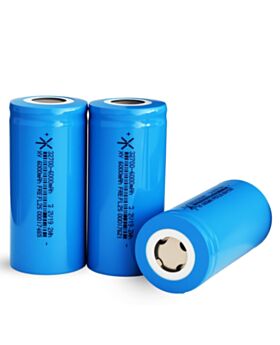How to Choose the Right Lithium Battery Cells: A Guide for DIY Battery Builders
How to Choose the Right Lithium Battery Cells: A Guide for DIY Battery Builders
Lithium batteries power everything from electric vehicles to renewable energy storage systems. If you're looking to build your lithium battery, selecting the right lithium battery cells is crucial for performance, longevity, and safety. In this guide, we’ll walk you through the essential factors to consider when choosing lithium battery cells and how to make the right choice for your needs.
What Are Lithium Battery Cells?
A lithium battery cell is the core component of a lithium-ion battery, determining its capacity, power, and overall performance. There are various types of lithium battery cells available, including cylindrical, prismatic, and pouch cells. The most common cells are cylindrical, such as the 18650, 21700, and 32700 models. Each type has different advantages depending on the application.
Key Factors to Consider When Choosing Lithium Battery Cells
1. Battery Capacity: Choose the Right Energy Storage
Battery capacity, measured in mAh or Ah, determines how much energy the cell can store. Higher capacity batteries offer longer usage times, which is crucial for applications like energy storage and electric vehicles.
-
For energy storage, look for 32700 cells with capacities ranging from 5000mAh to 6500mAh, providing long-lasting power for solar storage and other systems.
-
For electric vehicles or power tools: Choose 21700 or 18650 cells with higher power demands, typically around 3000mAh or more.
2. Discharge Rate (C Rating): Ensuring Power Output
The discharge rate, or C rating, indicates how quickly a battery can release energy. High-C cells are essential for devices that require instant power, like electric vehicles and power tools.
-
For high-power applications: Look for cells with 3C or higher discharge rates.
-
For energy storage, A lower 1C to 2C discharge rate is usually sufficient.
3. Internal Resistance: Efficiency and Longevity
Lower internal resistance results in better efficiency and reduced heat generation. Batteries with high internal resistance degrade faster, leading to lower performance.
-
Choose cells with internal resistance less than 8mΩ for optimal performance and longevity.
4. Cycle Life: Longevity Matters
Cycle life refers to the number of charge-discharge cycles a battery can undergo before its capacity diminishes. Phosphate lithium (LiFePO4) cells, like 32700, typically last 2000-6000 cycles, while other lithium chemistries like NCM or NCA may last around 800-1500 cycles.
-
For long-term applications, like home energy storage, LiFePO4 cells are preferred due to their longer lifespan.
5. Battery Type: Cylindrical, Prismatic, or Pouch
Lithium battery cells come in different shapes:
-
Cylindrical cells (e.g., 18650, 21700, 32700): Popular for their higher energy density and ease of assembly.
-
Prismatic cells: Offer higher capacity but are less flexible in terms of form factor.
-
Pouch cells: More flexible and lightweight, but require careful handling.
Popular Lithium Battery Cells: Recommendations
| Model | Type | Capacity Range | Discharge Rate | Ideal Use |
|---|---|---|---|---|
| 18650 | Cylindrical | 2000mAh - 3500mAh | 2C - 5C | Power tools, energy storage |
| 21700 | Cylindrical | 4000mAh - 5000mAh | 3C - 5C | Electric vehicles, power tools |
| 32700 | Cylindrical | 5000mAh - 6500mAh | 1C - 2C | Energy storage, solar power systems |
| LiFePO4 (Phosphate) | Cylindrical | 6000mAh - 6500mAh | 1C - 2C | Long-life storage, home energy |
Choosing the Right Lithium Cell for Your Application
1. Home Energy Storage Systems
For home energy storage, 32700 LiFePO4 cells are ideal due to their high safety, long cycle life, and stable performance.
2. Electric Vehicles & Power Tools
For electric vehicles or power tools, 21700 or 18650 cells are the best options due to their higher discharge rates and compact design.
3. High-Power Applications
For high-power devices, such as power tools or industrial equipment, select cells with high C ratings (3C or higher) to ensure they can deliver the required power.
Conclusion: Choose the Right Lithium Battery Cells for Maximum Performance
Selecting the right lithium battery cell is essential for ensuring your battery pack performs efficiently, lasts long, and operates safely. By considering key factors like capacity, discharge rate, internal resistance, and cycle life, you can make an informed decision that suits your specific needs.
Whether you're building a home energy storage system, an electric vehicle, or power tools, choosing the right cell is the first step to building a reliable, long-lasting battery. Contact us for more detailed guidance on selecting and sourcing the best lithium cells for your projects.





Sign In
Create New Account